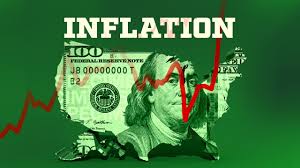MarketWatch
The numbers: The cost of living rose 0.5% in January — the biggest increase in three months — in a possible sign that U.S. inflation might not slow as quickly as hoped.
Higher housing costs and gasoline prices accounted for most of the increase. Economists polled by The Wall Street Journal had forecast a 0.4% advance in the consumer price index last month.
Consumer prices also rose 0.1% in December instead of declining, revised government figures showed.
U.S. stocks shed premarket gains after the report. Bond yields rose.
The annual rate of inflation, meanwhile, slowed again to 6.4% from 6.5%. That was the lowest level in 15 months.
The so-called core rate of inflation, which omits food and energy, advanced 0.4% for the second month in a row. It was above the Wall Street forecast of 0.3% gain.
The increase in the core rate over the past 12 months tapered to 5.6% from 5.7%.
The Fed views the core rate as a more accurate predictor of future inflation trends.
One caveat: The government revises its formula for seasonal adjustments in January each year and sometimes that can lead to unusually large price changes.
Key details: The cost of gasoline rose 2.4% in January and gave a boost to the headline CPI reading. Prices have subsided in February, however.
The cost of groceries — what’s referred to as “food at home” — rose 0.4% in the first month of the new year. That was the smallest increase in 17 months, however, and a good sign for the prospects of slowing inflation.
Grocery prices have risen 11.3% in the past year, but they have come off their peak.
A key price gauge the Fed is tracking as a proxy for labor costs, known as “supercore inflation,” rose just 0.2% in the month, based on calculations from Haver Analytics. The gauge excludes energy and housing expenses.
Over the past year so-called supercore inflation has risen 6.1%, down from a peak of 6.7% last September.
Fed officials worry a recent surge in wages could keep price pressures high and make it harder to get inflation back down to the central bank’s 2% annual target. It’s one of the most important numbers for the Fed now.
The cost of shelter — the single biggest category of the CPI — was another worry.
Rents rose a sharp 0.7% in January.
The yearly increase in the cost of shelter jumped again to a new peak of 7.9% from 7.5% in the prior month — a nearly 41-year high.
More recent surveys of rents and home prices, however, pointed to a slowdown or partial reversal in 2023 due to high mortgage rates and a slowing economy.
Yet it takes up to six months for these changes to show up in the CPI because of how these prices are calculated.
Big picture: High inflation hasn’t gone away and it isn’t going to disappear fast.
If the Fed sees evidence prices are steadily declining, the central bank could remove its boot from the neck of the economy. The Fed has been raising interest rates aggressively to tame inflation
Yet if inflation gets stuck well above the Fed’s 2% target, say 4% to 5%, the bank could raise rates even higher than planned and keep them high for a while. Higher borrowing costs slow the economy, raise unemployment and raise the risk of recession.
Looking ahead: “No one said disinflation would be a smooth ride. January’s CPI was a bump in the road,” said corporate economist Robert Frick of Navy Federal Credit Union. “The good news is that shelter costs, which accounted for about half the increase, should start dropping soon, putting inflation back on its downward path.”
“Overall it paints a picture of an inflation impulse that is still too high and that still requires the Fed to remain restrictive,” said U.S. economist Alex Pelle of Mizuho Securities.














